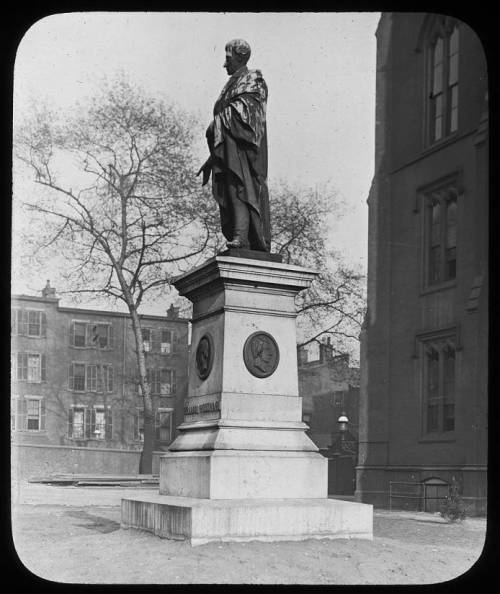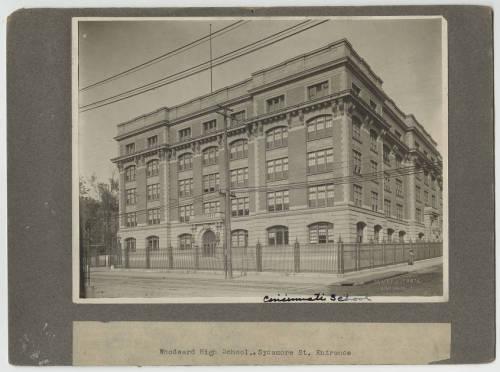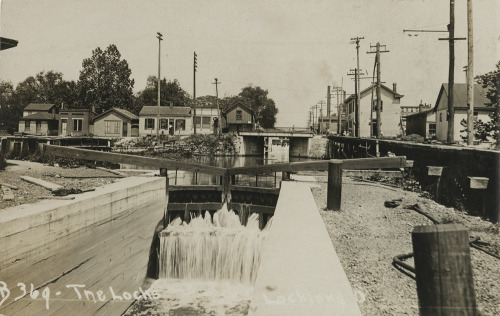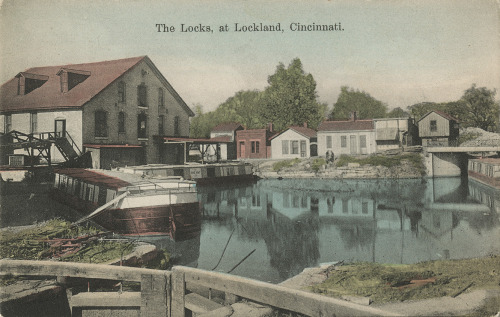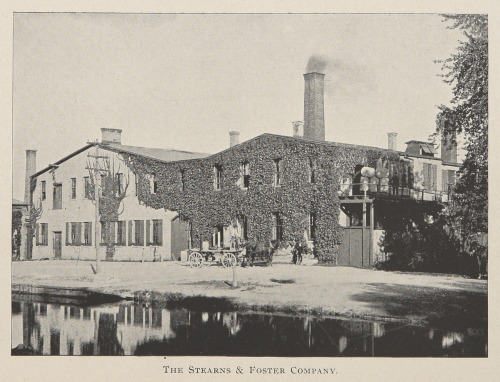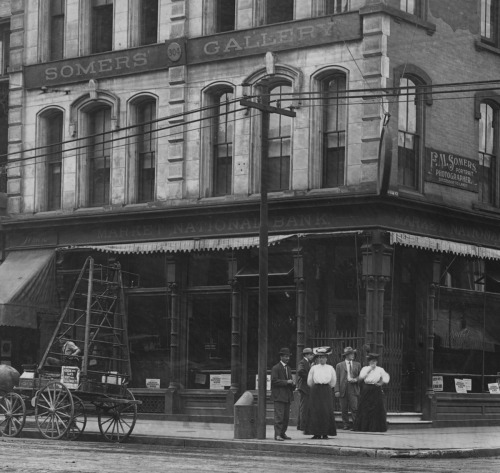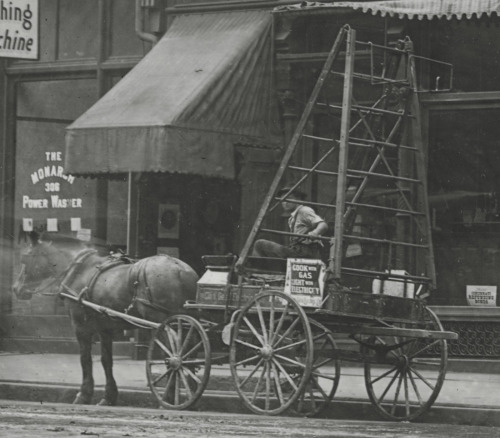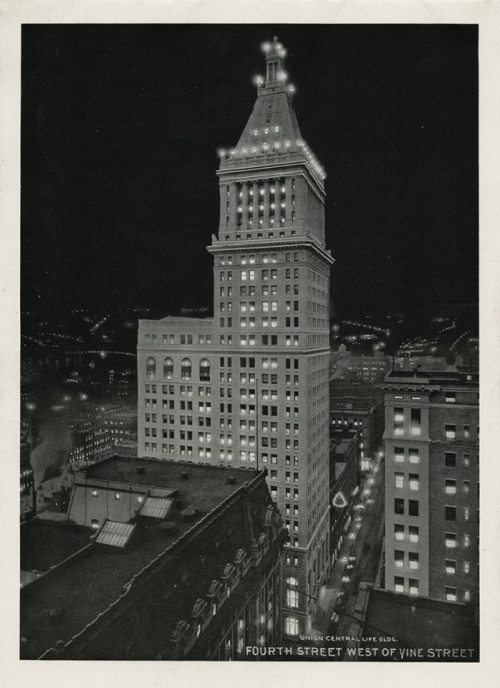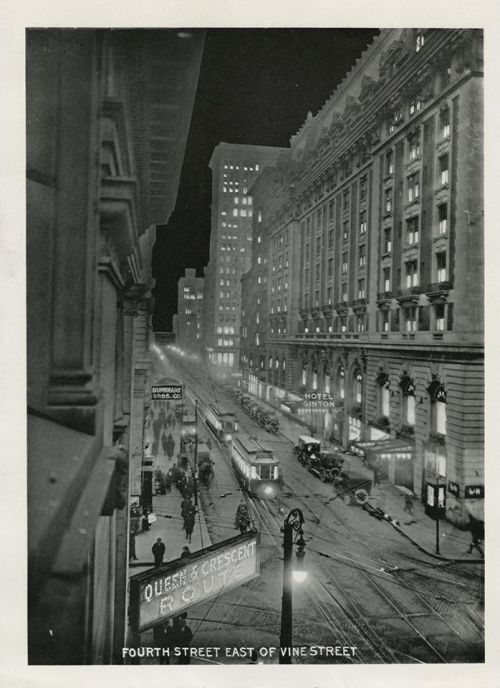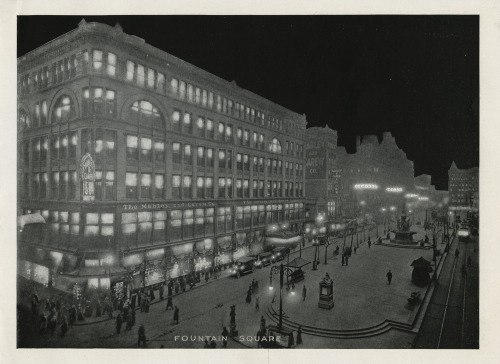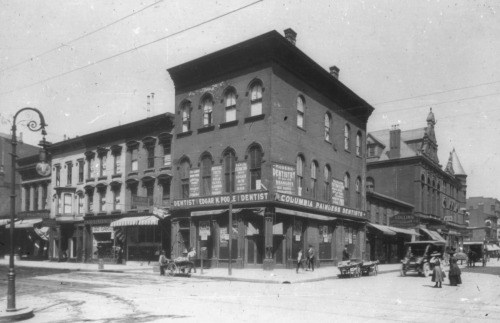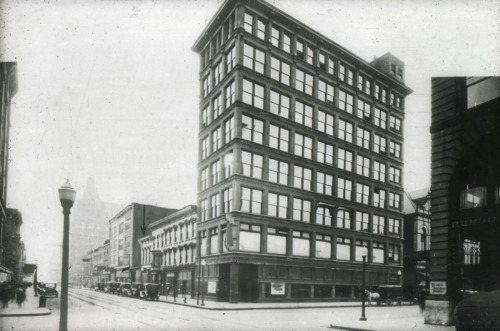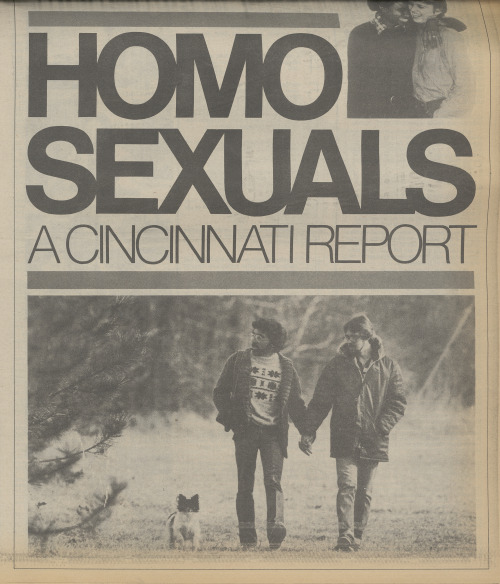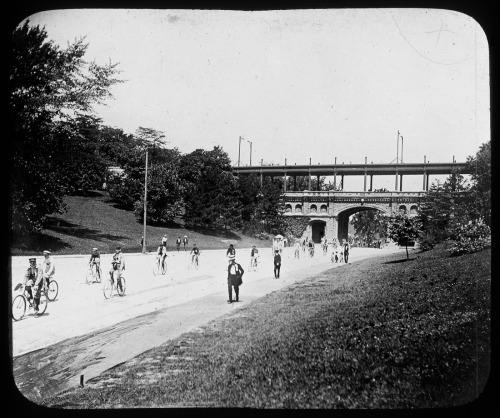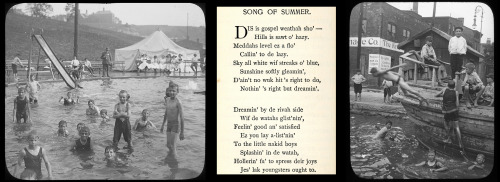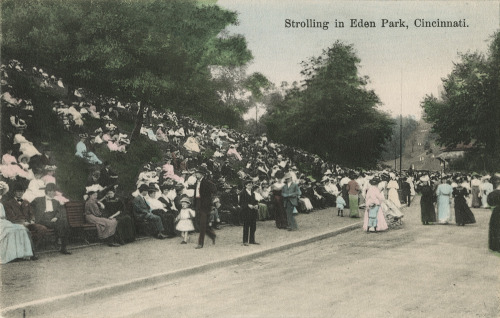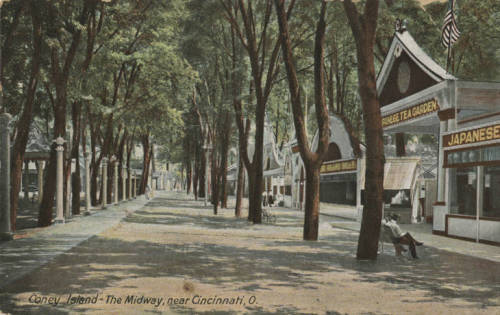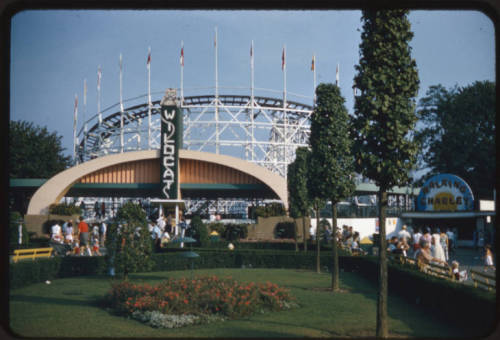#vintage cincinnati
Businessman William Woodward opened the first Woodward High School on October 24, 1831. The oldest public-school west of the Allegheny Mountains, Woodward School was located on Sycamore Street in Cincinnati. In the early twentieth century the original building was razed and the new building was rebuilt and opened in 1907. Woodward found a new home in Bond Hill in the 1950s and as of 2006, the City of Cincinnati opened Woodward Career Technical High School. Famous Woodward graduates include President William Howard Taft.
To see more images of Woodward Schools through the years, check out our Digital Library!
Post link
Strategically located on four locks of the Miami-Erie Canal, the village of Lockland was planned in 1828 by Nicholas Longworth and Lewis Howell. The Miami-Erie Canal was a major transportation route from Cincinnati to Lake Erie which attracted a major industry boom in the village of Lockland. Jobs were abundant with the operation of several water powered mills and the Stearns and Foster Company. People were drawn to this more rural area outside of the city of Cincinnati to lay down their roots and call Lockland home.
Be sure to visit our Digital Library to see more Cincinnati neighborhood photographs!
Post link
Designed by Samuel Hannaford, the H. W. Derby Building has served as a bank and a photography studio, and is listed in the National Register of Historic Places.
This Italianate building was built in 1887 by publisher and bookseller H. W. Derby. The original “Derby Building” stood at the Southwest Corner of Third and Walnut Streets. Derby made a fortune selling Law books and other educational materials.
Be sure to visit our Digital Library to see more historic Cincinnati buildings.
Post link
Check out this selection of unique photographs from the book “Night in Cincinnati,” by Theodore Newcomb, published in 1915.
Be sure to visit our Digital Library to view more Cincinnati history and unique finds!
Post link
The streetscapes of Cincinnati are always changing. Businesses come and go, old buildings are torn down, and new ones are built.
Top Image:
In 1895, the northwest corner of 7th and Race Streets was dominated by “The Columbia Painless Dentists, which was run by Dr. Edgar M. Poole . One of the large signs posted on the outside of the building reads "Painless Extractions with cocaine air or gas”.
An advertisement for the business placed in a 1907 edition of the Cincinnati Post reads:
“Oftentimes, inspection is forced of the teeth. This is wrong. The teeth should be examined frequently for signs of decay and given the proper attention. We will fill them for 50 cents or extract them painlessly. Our prices are the most reasonable. Call and see.”
The Collins and Bruggemann Co. Art Store can be seen in the one-story building to the right of Columbia Dentists, under a sign that reads “ Collins and Bruggemann Pictures and Frames”. The business moved to 4th street when these building were torn down.
The distinctive Lincoln Club building can be seen at the far end of the block on 8thStreet.
Visit our Cincinnati History Slide Collection to see more images like this.
Middle Image:
Located on the corner of Race and 8th, the Lincoln Club of Cincinnati was a Republican social organization. Founded in 1879, the club counted many prominent citizens as members, including Charles Fleishmann, who served as a Vice President, and William Howard Taft.
Their headquarters building at 8th and Race was built in 1886, and designed by Samuel Hannaford.
The three story neo-Romanesque structure was remodeled in 1895. After the Lincoln Club folded, the Rudolph Wurlitzer Company purchased the building and leased space to the Cincinnati Automobile Club. The building was razed in 1929, and the site remained a parking lot until the Garfield Tower was built in the late 1960’s.
This image is from Kraemer’s picturesque Cincinnati.
Bottom Image:
The northwest corner of 7th and Race Streets in 1921. Originally known as the Robertson Building, this 8-story building was built circa 1910 by the Robertson Realty Company at a cost of $90,000. In 1911 it was sold to Jefferson Livingston, the owner of the Snyder Preserve Company, who renamed named the building after himself. The Pearl Market Bank purchased the entire Livingston Block for $325,000 in 1921.
View the original slide image here.
Post link
In this month of celebrating Pride, we highlight LGBTQ+ history and representation in Cincinnati.
In the late 1970s the Greater Cincinnati Gay Coalition, later renamed the Greater Cincinnati Gay and Lesbian Coalition (GCGLC) was formed as a parent organization to other LGTBQ+ organizations throughout the city. This created a safe space for people to come and share personal stories, organize events and support each other’s efforts. The GCGLC along other organizations such as PFLAG and Stonewall Cincinnati, just to name a few, were responsible for the Cincinnati Pride we know today.
It should be noted that the Transgender community as well as BIPOC are drastically underrepresented and supported in the LGBTQ+ community. It wasn’t until recently that Transgender people and BIPOC have gained wider acceptance and representation within the United States.
The Crazy Ladies Bookstore was a hotspot in the LGBTQ+ and Feminist community. Named as a commentary on women being belittled by being deemed as “crazy” or “hysterical”, it was a safe haven for individuals to meet and gather resources to create lasting change in society.
One year after the establishment of the Cincinnati’s first LGBTQ+ organization, Cincinnati held its first Pride Parade in April, 1973. Roughly 400 people attended the parade and despite press releases, there was little to no media coverage of the parade. The Independent Eye (as shown above) and Channel 9 news were the only coverage the parade received. After the parade, there was a dinner and dancing to celebrate the significance of the event.
Pride parades are held all over the world to commemorate the Stonewall riots which sparked the LGBTQ+ movement.
Click here to see this article as is appears in the Independent Eye.
In 1982, The Cincinnati Enquirer ran a 27-page special titled “Homosexuals: A Cincinnati Report.” Editors noted that it was “an attempt to provide a context to understand the lives of perhaps 140,000 Cincinnatians who were gay.” Despite public backlash, a piece of this length in a well-known newspaper was unheard of in 1982. However, it provided the LGBTQ+ community the much needed visibility they deserve.
Click here to view the full 27-page special.
Be sure to visit our Digital Library to view more Cincinnati history! Happy Pride!
Link to LGBTQ+ resources and support groups.
Post link
The current village of St. Bernard was first settled by John Ludlow in 1793. By 1850, John Bernard Schroeder purchased and auctioned 90 lots, naming the area St. Bernard. By 1912, St. Bernard incorporated as a city with more than 5,000 residents. Home of Proctor and Gamble’s Ivory Soap as well as other manufacturing companies put St. Bernard on the map as an industrial power. As jobs multiplied so did the areas residential growth.
To view more of St. Bernard’s history check out our Digital Library.
Post link
Summer is here and we are eager to enjoy the warm weather and have fun outdoors. Cincinnatians have many wonderful parks and waterways to choose for outdoor recreation. Enjoy these images from our Digital Library of summer fun in and around the city.
Post link
In 1886, apple-farmer, James Parker sold 20 acres of land along the Ohio River. By June, the Ohio Grove Corporation opened “Ohio Grove, The Coney Island of the West” to the public. Since its original opening, Coney Island has been through various changes over the years. Civil Rights activists including Cincinnati’s Marian Spencer fought to have Sunlite Pool desegregated in 1955. Riverbend Music Center was added in 1984 as an outdoor concert venue and by 2019 the amusement rides were being sold off to accommodate upgrades for Sunlite Pool.
To see more historic images of Coney Island visit our Digital Library!
Post link




